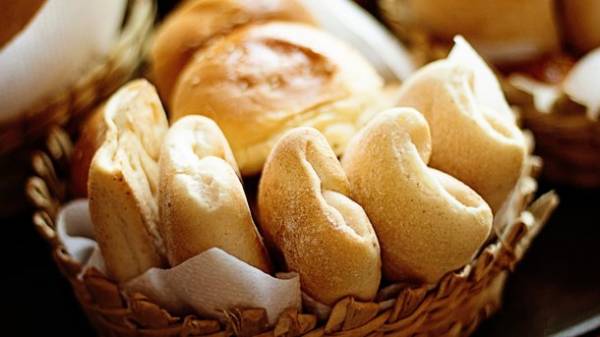
Delicious pastries, bread with a crispy crust, loved grandma’s pies — something that is dear and familiar from childhood to many of us. Indulging yourself in fresh pastries for tea, it really brings us back to the old carefree times, and then it’s more than just food — it is a way to regain my strength, podpisalis bright memories.
But today, the yeast cake is exposed to hundreds of attacks by the adherents of a healthy diet. Bakery yeast from a popular technological product has become one of the worst enemies of man: free you can find a lot of information on how yeast, bakery products lead to “acidification” of the human body, the death of healthy intestinal flora and even cancer. Bread labeled “yeast-free” can be found on the shelves of any large store. But, unfortunately, the price of it much higher than “normal”. And unfortunately, the child returns not always.
What to do in this situation? There are the usual yeast bread, risking their own health, or to show awareness, to accept the taste properties and go to the sourdough bread? We asked these questions to our experts: Catherine Tolstikovoj, the doctor-dietician and fototerapia, and Natalia Sokolova, senior lecturer of Department of technology of bread, confectionery, pasta and food concentrates ONAFT, Ph. D. And at the same time asked them to dispel the most common myths associated with yeast.
- MYTH: Thermophilic yeast inhibit the intestinal microflora
- TRUE: Baking yeast can’t get in the human body, including baked goods
“Thermophilic yeasts as those do not exist in principle” — says Natalia Sokolova. Saccharomyces cerevisiae is the yeast species used in baking, gives the most active growth in the range of temperatures from 8 °to 40 ° C. the Dry substance of yeast is half of the protein, and this explains its sensitivity to high temperatures. But when heated above 50 °C, the protein denatures, and the yeast cell dies.
In the bread baking process the temperature of the crumb reaches 96-97 °C. Thus, it is obvious: to detect live yeast cells in the finished sweet bread is absolutely impossible. And even if the bread was not baked — yeast cell trapped in the gastrointestinal tract of humans, would not survive the harsh acidic environment of the stomach and still would have died.
- MYTH: baking Yeast causes fermentation in the gut
- TRUE: Fermentation cause yeast and carbohydrates
Yes, the baking causes fermentation in the gut. But not in yeast not in yeast, and simple carbohydrates contained in bread in large quantities. “Carbohydrates can actually cause fermentation, especially when the genetic deficiency of enzymes that split them apart,” explains Ekaterina Tolstikova. But the enzyme deficiency is quite common, even fructose 40% of our population do not tolerate very well. So harmless and useful apples can cause heaviness in the stomach, and the buns and other pastries — bloating and fermentation. Therefore, the decision whether to eat bakery products, should be taken based on the technology of production, and supplements that may contain bread (sugar, flavor enhancers, etc.), and by the individual characteristics of tolerance to carbohydrates.
- MYTH: the sourdough Bread healthier than yeast
- TRUTH: Absolutely unleavened bread did not sell
In the so-called unleavened bread for fermentation uses lactic acid bacteria. They are contained in ordinary compressed bakery yeast, and in one standard bar the contents of the yeast cell Saccharomyces cerevisiae is much lower than the number of molecules of lactic acid bacteria. These bacteria also ferment carbohydrates, but only with their help it is impossible to achieve familiar to the eye the splendor of the bread. Ie bread, which are completely absent in yeast, has an unusual view of partially rising of buhanets. This bread will not attract the attention of buyers, so, even in minimal quantity, but the yeast is still added to the cakes “leaven”, produced for the mass market.
SEE ALSO
- What is smorrebrod: recipe unique dishes from Denmark
Thus, according to our experts, largely unleavened bread is a marketing move designed to meet the increased demand for healthy food. And nutritional value it differs only slightly from the value of its yeast counterparts — which, unfortunately, can not say about the price.
WHAT IS THE USE OF YEAST?
So: the yeast in bread can cause harm to the human body, for it is destroyed during baking. But then there is a second natural question: do they give us something useful? Our experts say Yes. In baking yeast contains a considerable amount of vitamins b and D. Most of them, of course, is destroyed during baking. But some remain in the finished product.
— Vitamin B1 (thiamine) contained in yeast in an amount of about 20 mg per 1 g of dry matter. In the human body it helps to maintain the activity of the heart, nervous and digestive systems, involved in the metabolism of proteins and in the synthesis of fat. Thiamine improves mental ability and mood, improves brain function. Because vitamin B1 is not stored by the body and has no toxic properties, its reserves should be replenished daily.
— Vitamin B2 (Riboflavin) is a vitamin of health and beauty. It is contained in the bakery yeast in an amount of about 25-30 µg per 1 g of dry matter. The lack of Riboflavin in the diet of man leads to various lesions of the skin, disorders of vision and the nervous system. Vitamin B2 can withstand temperatures up to 120 °C, fully preserved in the finished product.
Yeast also contains a lot of micro – and macro-elements: iron, zinc, iodine, copper, potassium and others.
Thus, Baker’s yeast received its current status of the formidable enemies of the human body. In essence, the yeast — only living microorganisms that are doing their job in the baking process, increase the nutritional value of bread, destroyed from high temperatures and leaving their mark in the form of a lush and tender crumb. Well, not to gain weight, you need to eat quality bread and not buns, and not to abuse the amount of baking.







